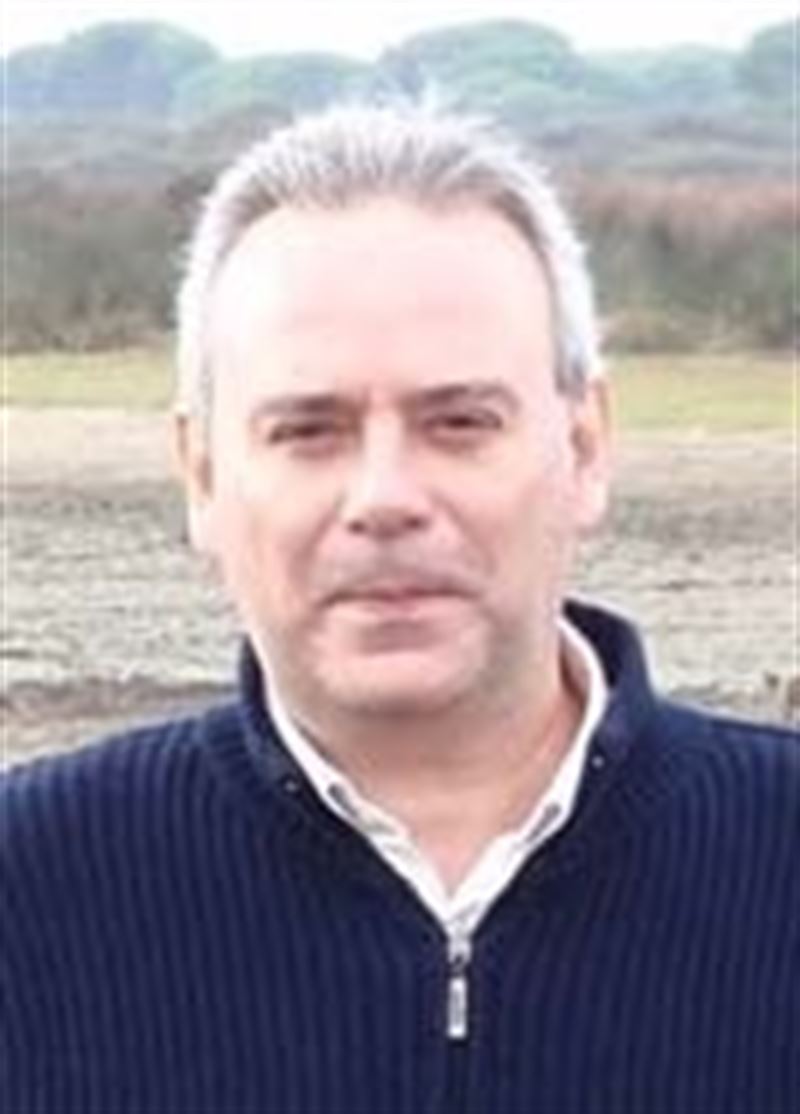Relazioni ad invito - Invited lectures
 Marina Manca
Marina Manca
CNR - Institute for Ecosystem Study, Verbania-Pallanza, Italy
Title: Long-term research to understand impact of perturbations on lakes: the example of Lake Maggiore
Abstract:
Perturbations linked to the direct and indirect impacts of human activities during the so-called Anthropocene, affect the structure and functioning of lake ecosystems to varying degrees. To understand the patterns and mechanisms of these anthropogenic effects and the extent to which they may drive irreversible changes in ecosystem services, long-term research is required. Studies on the long-term dynamics of plankton may be particularly useful for large and deep lakes whose overall productivity is dominated by pelagic processes. In the open-waters of such lakes, planktonic organisms link and interact with both abiotic and biotic compartments. Here we will analyse 60 years of data on the plankton of the large, deep, subalpine, Lake Maggiore, tracing changes in the pelagic food web which occurred during different phases of the lake’s recent evolution. We will document short- to- medium response times by different trophic levels, from microbes, to primary producers and secondary consumers. We will revisit results of past studies based on contemporary and paleolimnological studies and present new analyses to: i) identify any tipping points of the lake trophic evolution, ii) discern effects of recent climatic change, iii) quantify whether inter-annual variability has changed perhaps in responses to changes in thermal stratification regime and warming. By supplementing structural with functional descriptions of long term changes in phyto- and zooplankton communities, we aim to test competing mechanisms underpinning the decade-scale changes we observed.
Biosketch:
 John D. Milliman
John D. Milliman
Virginia Institute of Marine Science, College of William and Mary, Gloucester PT, VA USA
Title: Impact of Catastrophic Events on Small Mountainous River Discharge
Abstract:
Small mountainous rivers (<10,000 km2 in area) account for only about 10% of the land area draining into the global ocean, but collectively they discharge nearly 40% of the world’s sediment load. One reason for these very high yields are catastrophic events, particularly earthquakes and floods, as seen in the very high sediment yields of small rivers in such diverse areas as in Taiwan rivers and rivers draining into the Adriatic Sea. The effects of such events is perhaps best illustrated by the Choshui River (3100 km2) in western Taiwan), which between 1990 and 2009 was impacted by 26 significant floods as well as the Mw 7.6 Chichi earthquake (September 1999). In the 10 years prior to the earthquake, during which there were 7 significant floods, the Choshui discharged ~330 million tons (Mt) of sediment past the Jangun Bridge gauging station (seaward-most station on the river), nearly half of which was discharged during two floods (1994, 1996). In the 10 years after the Chichi earthquake, the Choshui discharged 1450 Mt, 1250 Mt of which were discharged during 11 major floods and 2 super floods. The decadal average sediment yield of ~45,000 t/km2/yr (compared to the average global yield of 190 Mt/yr) was roughly an order of magnitude greater than it would have been without the earthquake or the typhoon-generated floods. To document the impacts of such events in other rivers necessitates careful long-term monitoring, which, unfortunately, few rivers presently have.
Biosketch:
My research interests center on the flux and fate of sediment in the ocean. In practice this involves the study of both river-derived sediment (the single greatest source of sediment in the oceans) and calcium carbonate. Research has included the study of such diverse areas as rivers and their estuaries (ranging from the Amazon River down to rivers orders of magnitude smaller) to carbonate environments on tropical banks and shelves. This research has involved a variety of techniques and approaches, such as timeseries measurements within estuaries, high-resolution seismic profiling of the late Quaternary geological record, and the petrographic study of carbonate sediments and their cements. Recently my studies have included armchair reviews and synopses of fluvial and carbonate systems and their budgets. In recent years these studies have led me to investigate the societal and economic implications of natural and anthropogenic changes on sedimentary systems, both on local and global scales. For example, what is the impact on a low-lying area from a relative rise of sea level, when a river is diverted or fringing coral reefs effectively stunted? Ultimately answering these questions can involve an interesting series of studies that can lead to unexpected scientific results as well as societal implications.
 Laurence Carvalho
Laurence Carvalho
Freshwater Ecology Group, Centre for Ecology & Hydrology, Edimburgh, UK
Title: Putting Ecology into Ecosystem Services: the Challenges ahead for Limnology
Abstract:
Since the Millennium Assessment in 2005, the concept of ecosystem services has become rapidly adopted in environmental policies across the globe. Great efforts are now being made to model and map these services and value the benefits they provide, yet the ecological processes underpinning the delivery of ecosystem services is rarely considered in any depth. Freshwater lakes provide many ecosystem goods and services, including water supply, fish production, tourism and recreation, as well as a host of regulatory services, such as water purification and climate regulation. To manage all these services in a sustainable way requires ecological understanding. This raises a number of challenges for ecological science: What are the relationships between water quality, freshwater biodiversity and the delivery of ecosystem services? Can we incorporate this understanding into models of ecosystem services? How do we manage lakes to minimise conflicts and maximise benefits whilst sustaining environmental quality? The talk will highlight some of the difficulties addressing these challenges and some solutions to help put ecological science back into ecosystem services. The development and application of functional trait-based classifications is one such approach. At a local scale, a case-study of Loch Leven, a large, shallow lake in Scotland, will highlight that the relationships between freshwater biodiversity and the services provided by freshwaters are complex and that thresholds in ecosystem services are not just driven by ecology. Demonstrating at least some linkage, is however, critical to develop stronger public and policy support for maintaining and restoring the ecological quality of our lakes.
Biosketch:
Laurence is an ecologist interested in biodiversity and water quality in freshwater ecosystems. He is especially obsessed with algae and wants to spread the word about how important they are in providing the oxygen we breathe and the clean water we drink. He focuses a lot of his work on algal blooms that affect water supply and recreation. Much of his research he has carried out through collaborating extensively with a network of other algal enthusiasts across Europe, collating large scale datasets from hundreds of lakes to deliver ecological assessment schemes for the European Water Framework Directive. Looking for a change in perspective, he recently spent one year on secondment to the European Commission in Northern Italy, thinking about how we can measure the contribution of freshwater biodiversity to the delivery of ecosystem services. This is the focus for much of his current efforts to persuade people that algae are the most important organisms on this planet
 Valentí Rodellas
Valentí Rodellas
Institut de Ciència i Tecnologia Ambientals & Dep. de Física, Universitat Autònoma de Barcelona, Barcelona, Spain
Title: Submarine Groundwater Discharge: a relevant but overlooked process in the Mediterranean Sea
Abstract:
Submarine Groundwater Discharge (SGD), encompassing fresh groundwater and seawater recirculating through the coastal aquifer, has been recognized as an important component of the hydrological cycle and a dominant pathway for terrestrial chemical constituents to reach the coastal sea. Inputs of nutrients supplied by SGD may be particularly relevant for the biogeochemical cycles of the Mediterranean Sea, which is considered one of the most oligotrophic seas in the world. However, the role of SGD as a source of dissolved compounds to this basin has been largely ignored. In this study, we used a comprehensive mass balance of radium-228 (228Ra) to estimate the magnitude of SGD to the Mediterranean Sea, as well as its associated nutrient inputs. Radium isotopes have been widely applied as tracers of SGD, mainly because they are highly enriched in SGD relative to seawater and they behave conservatively once released into the sea. By using this radionuclide, we estimated that the total SGD contributes up to (0.3–4.8)·1012 m3·yr-1 to the Mediterranean basin, which appears to be 1-16 times higher than the riverine discharge. SGD represents also a major source of dissolved inorganic nutrients (Nitrogen (DIN), Phosphorous (DIP) and Silica (DSi)) to the Mediterranean Sea, with median annual fluxes of 190·109, 0.7·109 and 110·109 mol for DIN, DIP and DSi, respectively, which are comparable to riverine and atmospheric inputs. These results demonstrate the profound implications that SGD may pose in the biogeochemical cycles of the Mediterranean Sea and emphasize the need for its consideration in coastal and basin-wide studies.
Biosketch:
Valentí Rodellas is a postdoctoral researcher at the Institute of Environmental Science and Technology, which belongs to the Universitat Autònoma de Barcelona. The overarching theme of his research is applying radionuclides as tracers of environmental processes and, particularly, tracing groundwater inputs to the coastal sea by using radium isotopes and radon. He is also interested on the role of submarine groundwater discharge (SGD) as a source of dissolved constituents (nutrients, metals, pollutants...) to coastal areas, as well as on its geochemical and ecological consequences.
 Antonio Camacho
Antonio Camacho
Cavanilles Institute for Biodiversity and Evolutionary Biology,
Title: Hydrological alterations on aquatic ecosystems of the
Abstract:
In the Mediterranean region intensive water usage usually drives to unbalanced distribution of water resources, and the ecological health of aquatic ecosystems is not always guaranteed when water needs for humans are high. Hydrological alterations often affect the ecological functioning of these ecosystems, and impact its physical structure, biogeochemical cycles, and the composition of the biological communities, among others. This also have repercussions on the services these ecosystems offer, this is, the benefits that we, as humans, obtain from nature. Here we offer a series of scientifically supported case studies in which the ecological health of specific aquatic epicontinental ecosystems located in the Mediterranean region have been impacted by hydrological alterations, and how this modifies its ecological functioning by acting on its morphology, biogeochemistry, and/or its biota, thus affecting ecosystem services. Water regulatory frameworks, such as the Water Framework Directive in
Biosketch:
Antonio Camacho is Head of Research at the Aquatic Ecology Group of the Cavanilles Institute for Biodiversity and Evolutionary Biology and Professor on Ecology at the
 Antonio Dell'Anno
Antonio Dell'Anno
Department of Life and Environmental Sciences,
Title: Microbial diversity and ecosystem functioning in a changing ocean:a plunge into the deep sea
Abstract:
Deep-sea ecosystems represent the largest and most remote biome of the biosphere. They play a key role in biogeochemical cycles and ecological processes that regulate the functioning of the biosphere, and provide the basis for a sustainable provision of ecosystem goods and services. In the last 20 years enormous progress has been made in the investigation of deep-sea microbes, but the knowledge of the microbial ecology of surface deep-sea sediments is still limited. Deep-sea sediments host the largest fractions of Bacteria, Archaea and viruses on Earth, and available results suggest that a large fraction of microbial diversity is completely unknown to science. Assessing the diversity of benthic deep-sea microbes, their distribution and interactions across and within oceanic sectors are key priorities for a better understanding of the functioning of the global biosphere and for planning efficient management strategies at regional scale able to mitigate the forecasted impacts of global climate changes. In this talk I will present new insights on virus-host interactions in surface deep-sea sediments with a special emphasis on the potential impact of present climate changes on benthic deep-sea ecosystem functioning.
Biosketch:
Antonio Dell’Anno is Head of Research of the Microbial and Molecular Ecology Group at the Department of Life and Environmental Sciences and Lecture in Applied Eco-Technologies and Environmental Sustainability at the Polytechnic University of Marche (
